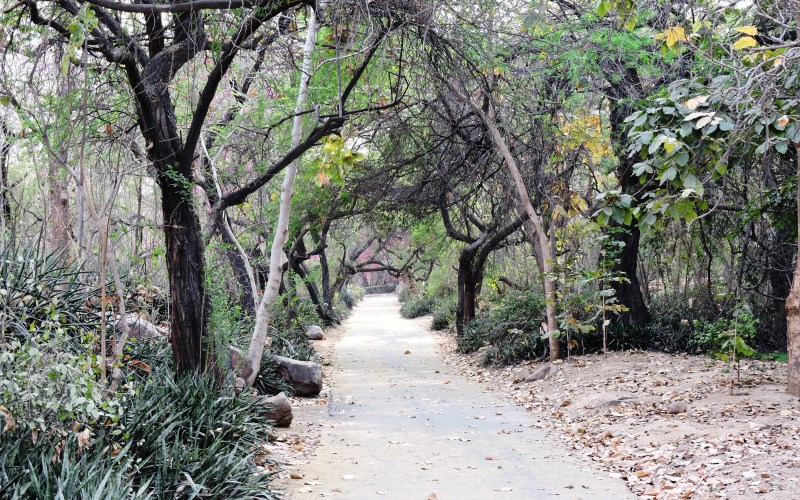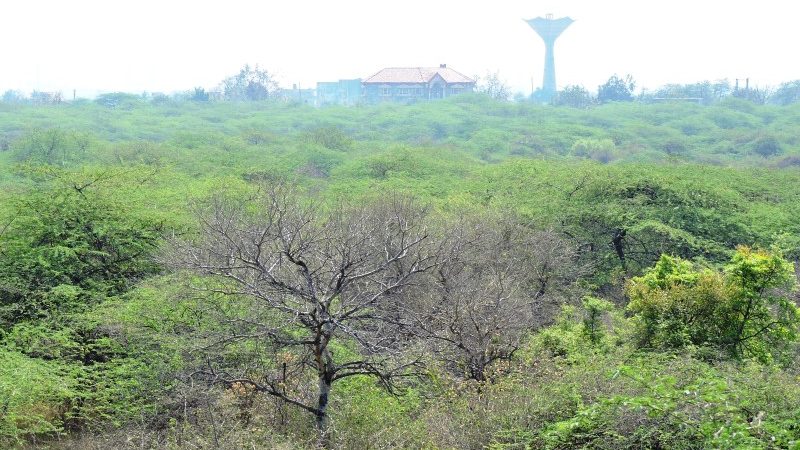Learn about 17 City Forests in Delhi on International Day of Forests

21 March is celebrated as the International Day of Forests since 2012. It is day to celebrate and raise awareness of the importance of all types of forests. Forests are the lifeblood of our planet, they provide invaluable benefits to humanity. Forests play a vital role in regulating climate and give us oxygen that we need to stay alive. They act as natural filters, cleaning the air we breathe and prevent soil erosion, floods and landslides. Urban forests are even more important for the health of citizens. Forests also have cultural, social and economic importance, since millions of people depend on them for livelihoods and countless other benefits. Forests are not just groves of trees; they are intricate ecosystems that sustain life on Earth and are indispensable for the well-being of present and future generations.
Despite so many benefits, forests continue to face the threat of deforestation and degradation. It is estimated that over 10 million hectares are lost annually due to deforestation and approximately 70 million hectares of forests are affected by fires. The battle against deforestation requires new technological advancements. There is need for innovations for early warning systems, sustainable commodity production and empowering local communities through land mapping and climate finance access. Keeping this in mind, the theme for International Day of Forests 2024 is Forests and Innovation: New Solutions for a Better World. Forest restoration using ecosystem approaches and innovation can significantly contribute to climate mitigation and enhance food security.
17 City Forests of Delhi
Delhi, the capital of India, is witnessing rapid pace of urbanization. It has recently been found to be the most polluted capital cities in the world. The Government and civil society are making considerable efforts in controlling the air pollution in Delhi. In its efforts to maintain patches of forests in the city, the forest department of the Government of NCT of Delhi has earmarked 17 city forests. These urban green spaces are aimed at serving a multitude of purposes and provide essential ecosystem services to the citizens. These include replenishing oxygen levels, recharging ground water, sequestering carbon emissions and mitigating air pollution. The 17 city forests are designed to uphold principles of sustainability while adhering to existing legislative frameworks and judicial directives. In addition to contributing to physical well-being, these urban forests also have a role in nurturing mental and psychological well-being of citizens.
Maintaining City Forests also serve as vital interfaces between the Delhi Government and the public, fostering citizen engagement, awareness and participation in conservation efforts. These have great potential to be dynamic hubs of urban forestry, for leveraging citizen science and promoting participatory approaches to enhance environmental education and community involvement. The 17 city forests symbolize green oases amidst urban sprawl and embody a vision of harmonious coexistence between nature and the cityscape. On International Day of Forests 2024, let us learn about these city forests and begin visiting them from time to time.
- Mitraon City Forest-Pkt A, located in the West division, covers an area of 12 acres. (established: 2016)
- Mitraon City Forest-Pkt B, also situated in the West division, spans across 86 acres. (established: 2018)
- Nasirpur City Forest, part of the West division, occupies an area of 11.5 acres. (established: 2000)
- Alipur City Forest, within the North division, extends over 48 acres. (established: 1999)
- Mukhmelpur City Forest, located in the North division, encompasses 5 acres. (established: 2022)
- Taj Enclave City Forest, situated in the Central division, covers an area of 2.1 acres. (established: 2016)
- Shastri Park near colony City Forest, also in the Central division, occupies 14.1 acres. (established: 2019)
- Garhi Mandu Pkt A2 City Forest, within the Central division, extends over 42.1 acres. (established: 2019)
- City Forest at Shastri Park Metro Station, in the Central division, spans across 45 acres. (currently under development)
- City Forest at ITO Chungi Loop No. 4, situated in the Central division, covers 4.5 acres. (established: 2022)
- Butterfly Trail, Tughlaqabad, located in the South division, encompasses 20.3 acres. (established: 2018)
- Aravali Aranya Kendra, Tughlaqabad, also in the South division, covers an area of 5 acres. (established: 2017)
- Hauz Rani City Forest, situated in the South division, spans across 86.8 acres. (established: 1994)
- Aya Nagar City Forest, within the South division, occupies 28.6 acres. (currently under development)
- Jaunapur City Forest, located in the South division, covers an extensive area of 97.8 acres.
- Dera Mandi City Forest, within the South division, encompasses 3.34 acres.
- Chhattarpur City Forest, situated in the South division, spans across 16.8 acres.
The City Forests of Delhi offer a diverse tapestry of green spaces, each with its own unique history and significance. These urban oases stand as testament to Delhi’s commitment to environmental conservation and community well-being. Not all these city forests are currently open to the public as some are under development phases. As citizens, we must learn about these city forests, and the sustainable thinking behind them and make good use of them and the benefits they will bring to us. Delhi’s 17 City Forests stand as beacons of hope reminding us of the intrinsic value of nature and the need to coexist harmoniously with our environment. As Delhi continues to grow and evolve, these green sanctuaries will remain vital lifelines, nurturing both the city and its inhabitants for generations to come.




Good work Garima, feeling happy to learn about them.